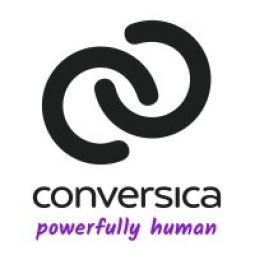Applicable Functions
- Sales & Marketing
Use Cases
- Supply Chain Visibility
About The Customer
Epson America is a well-known company that produces a wide range of consumer and commercial products. A significant part of their business is their commercial products group, which generates a large number of leads each year through various campaigns. The company was looking for a way to optimize the conversion of these leads, particularly as they expanded their product lines. They needed a solution that would provide a systematic approach to lead management and improve visibility into lead follow-up. The challenge was taken up by Chris Nickel, the Sr. Commercial Marketing Manager for Epson America’s five commercial groups.
The Challenge
Epson America, a company known for its consumer and commercial products, was facing a significant challenge in optimizing the conversion of its leads. The company's commercial products group, through campaigns such as “Where There’s Business, There’s Epson,” was generating between 40,000 to 60,000 leads each year. However, the responsibility of optimizing the conversion of these leads fell on Chris Nickel, Sr. Commercial Marketing Manager for Epson America’s five commercial groups. The challenge was that there was no solid process in place for managing these leads, and the situation was further complicated as the company extended its product lines. The effectiveness of lead management was also hindered by a lack of visibility into lead follow-up, making it difficult to track and optimize conversion rates.
The Solution
To address this challenge, Nickel deployed the Conversica platform within the commercial group handling projectors. This platform was designed to manage the high volume of leads coming into Epson. All leads were funneled through Rachel, their Conversica assistant. Rachel was responsible for following up with every lead, checking in to find out when the lead was ready to speak with sales. She also verified if the sales rep contacted the lead, providing visibility as to which dealers were following up and which ones weren’t. This solution provided a systematic approach to lead management, ensuring that no lead was overlooked and that all potential sales opportunities were capitalized on.
Operational Impact
Quantitative Benefit

Case Study missing?
Start adding your own!
Register with your work email and create a new case study profile for your business.
Related Case Studies.

Case Study
Remote Temperature Monitoring of Perishable Goods Saves Money
RMONI was facing temperature monitoring challenges in a cold chain business. A cold chain must be established and maintained to ensure goods have been properly refrigerated during every step of the process, making temperature monitoring a critical business function. Manual registration practice can be very costly, labor intensive and prone to mistakes.

Case Study
Retail Uses RFID to Enable Cold Chain Monitoring
Like most grocery retailers, Hy-Vee is faced with the challenge of providing the highest quality products to its shoppers. Shoppers want the longest possible shelf life from perishable products and expect a consistent product experience each time they shop. Controlling the quality of products sold leads to shopper loyalty, which is of paramount importance to the success of Hy-Vee. Before products arrive in stores, Hy-Vee's distribution centers (DCs) handle items including dairy products, fresh meats, seafood, deli items, produce and frozen goods, all of which have different temperature needs and sensitivities. During transit from suppliers to DCs, Hy-Vee has limited visibility and temperature management abilities due to large amount of supplier managed transportation. For instance, during a week-long transit, a supplier's carrier equipment may malfunction, causing an item to thaw and then refreeze once repairs are made. Hy-Vee sought help from TempTRIP, an RFID solution provider that focuses on shipping, storage, receiving, and temperature control. TempTRIP's EPC RFID tags use Impinj chips to monitor and report temperature readings throughout the shipping and receiving process. The tags can also be re-configured and re-used, a unique feature within the current market of temperature monitoring devices.

Case Study
Covisint Improves Mitsubishi's Collaboration With Its Supply Chain
Mitsubishi sought to improve supplier relationships on a global basis and to offer an easy-to-use solution to interact with them. In August 2004, Mitsubishi selected Covisint’s platform to help improve sharing of information and collaborative business processes with its global suppliers. Covisint enabled Mitsubishi to provide its suppliers with immediate access to information and applications to obtain more collaborative working relationships










